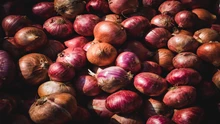
Is your home too tiny for a garden, yet you want some low-maintenance greenery? Then a terrarium is a fantastic option.
A terrarium is a self-sustaining indoor small garden enclosed in a sealed glass container. There is no need to open the container after the first planting, even for watering. However, if the garden is properly planted and managed, it will remain green.
Jincy Varghese, a terrarium creator from Thiruvalla, Pathanamthitta, teaches how to construct a great terrarium and how to avoid typical terrarium problems. Jincy, 36, has been running a terrarium business for over a year after abandoning her nursing career in Saudi Arabia due to health difficulties. The gardener explains, "I fully depended on YouTube to learn the technique, and it was an instant success."
From an expert, here are some simple terrarium-making tips for beginners:
Choose a suitable container
You may use any clear container with a wide opening and a tight top. Glass containers are preferable to plastic containers. "You may choose between a cookie jar, a fishbowl, a bottle of wine, or a bottle of beer," Jincy explains. You may make the container any size you like, from three inches to a foot long.
Select appropriate plants
The finest plants to choose are those that like humidity and can tolerate low light. Ferns, moss, and other similar houseplants can be useful. "For closed, low-maintenance terrariums, avoid succulents and cactus." She says that they may be grown in open pots.
Use basic tools
Because terrariums are small spaces, small equipment like chopsticks or tweezers are preferable. Using large tools will harm both the plants and the container.
Add drainage and charcoal layer
A drainage layer must be developed to keep water away from plant roots. As a result, begin by adding gravel or pebbles to the mix. "This drainage layer is the base layer," she explains. To absorb excess moisture and reduce germs and odour, top it with a thin coating of charcoal.
Add substrate
On top of the charcoal, add the potting mixture, also known as a substrate, which is made up of garden soil, sand, and cocopeat.
It’s time to plant
Before placing the plant roots in the container, remove any extra dirt that has accumulated on the roots. Using a chopstick or your finger, dig a hole for each plant. After planting, softly water it with a sprayer and seal the container.
Ensure a little sunshine
The growth of terrarium plants requires indirect, filtered sunlight. "Keeping the containers on the south side window area, where they may receive some but not too severe sunshine, is perfect." If it isn't possible, modest LED or fluorescent lights that don't create too much heat can be placed near the container."









